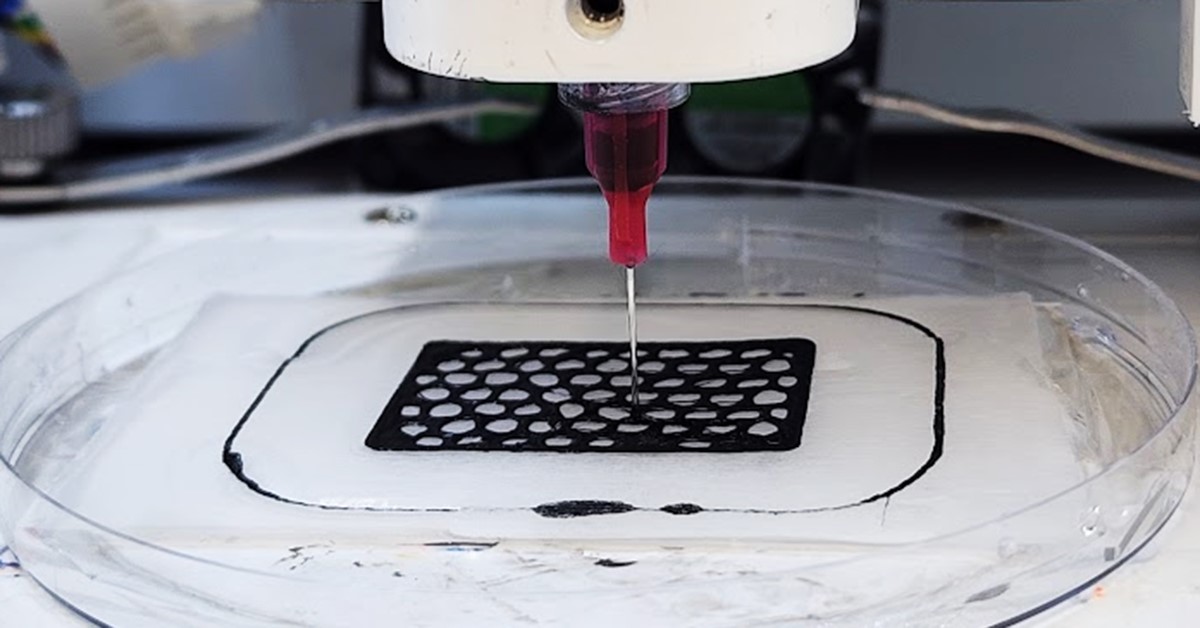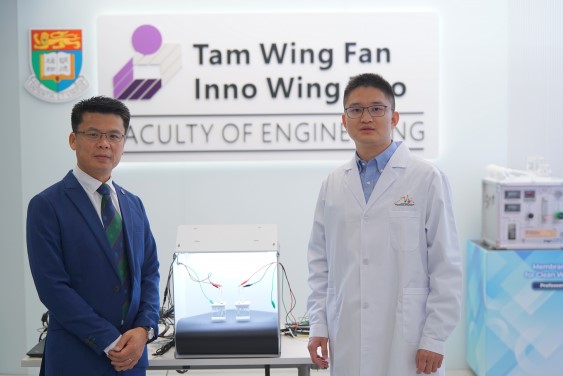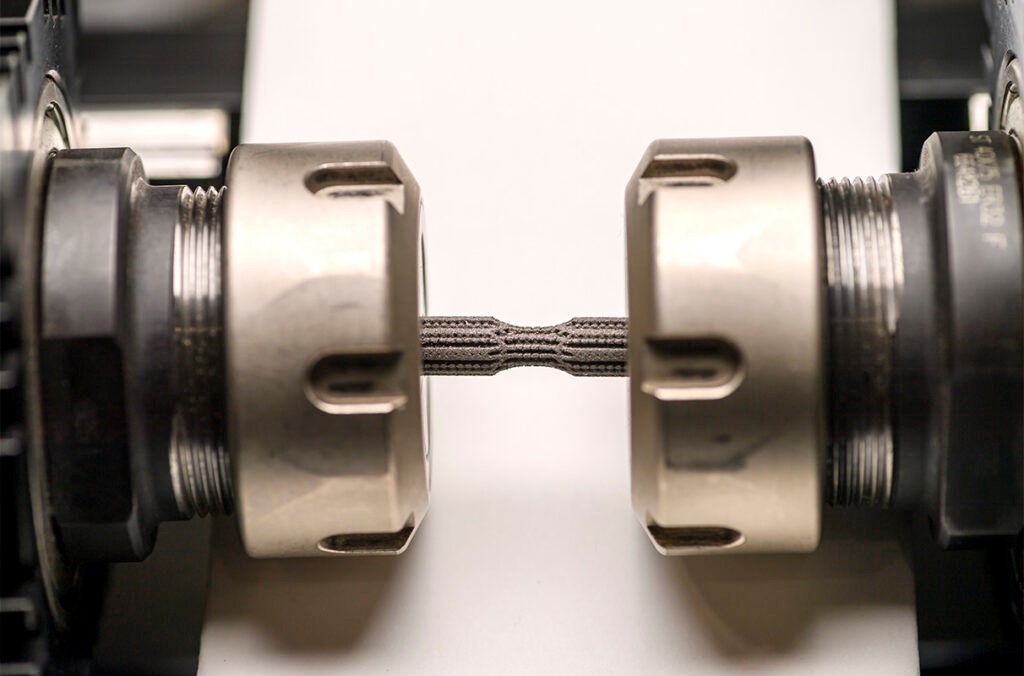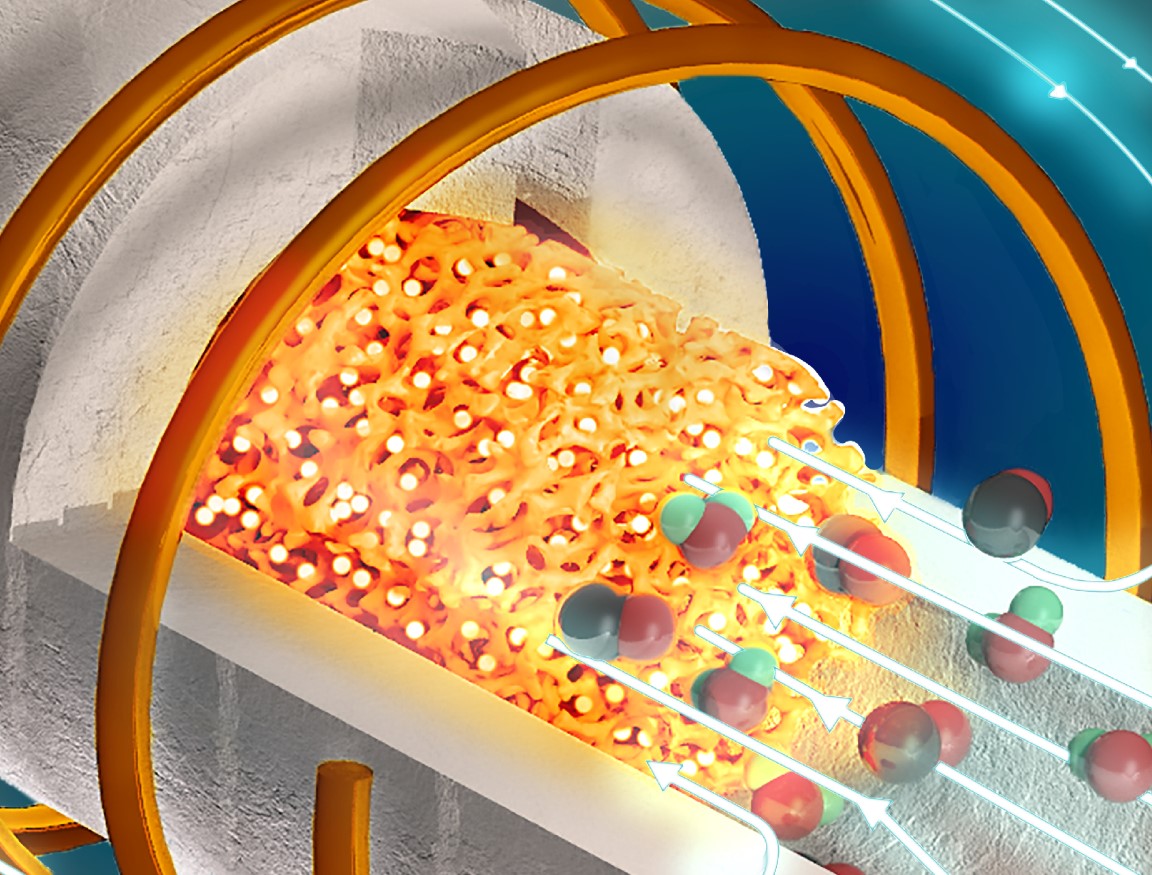Revolutionary 3D Printing Method Uses Salt Water and Polymer Ink for Sustainable Manufacturing
Engineers at the University of California San Diego have developed a groundbreaking 3D printing technique that's both simple and eco-friendly, as published in Nature Communications. This innovative method utilizes a polymer ink and a salt water solution to effortlessly create solid structures.

Figure 1. Sustainable 3D printing. (Credit: Donghwan Ji)
The key to this process is a liquid polymer solution called poly(N-isopropylacrylamide), or PNIPAM. When PNIPAM ink is extruded through a needle into a calcium chloride salt solution, it solidifies instantly upon contact. This rapid solidification is due to the salting-out effect, where salt ions attract water molecules from the polymer solution, causing the hydrophobic polymer chains in the PNIPAM ink to densely aggregate into a solid form [1]. Figure 1 shows A structure created using a simple, eco-friendly 3D printing method developed by UC San Diego engineers.
[2] “This is all done under ambient conditions, with no need for additional steps, specialized equipment, toxic chemicals, heat or pressure,” said Jinhye Bae, study senior author and a professor in the Aiiso Yufeng Li Family Department of Chemical and Nano Engineering at the UC San Diego Jacobs School of Engineering.
Unlike traditional polymer solidification methods that require energy-intensive steps and harsh substances, this new process leverages the simple interaction between PNIPAM and salt water at room temperature, achieving the same results without environmental harm.
Moreover, the process is reversible. The solid structures can be easily dissolved in fresh water, returning to their liquid state, allowing the PNIPAM ink to be reused for further printing. “This offers a simple and environmentally friendly approach to recycle polymer materials,” Bae explained [3].
Demonstrating the versatility of their method, the researchers printed various structures using PNIPAM inks mixed with other materials. For instance, they successfully printed an electrical circuit using PNIPAM mixed with carbon nanotubes, which powered a light bulb. This circuit could also be dissolved in fresh water, illustrating the potential for creating water-soluble and recyclable electronic components.
Bae and her team believe this simple and reversible 3D printing technique could pave the way for more environmentally friendly polymer manufacturing technologies.
Source: University of California - San Diego
References:
- https://www.sciencedaily.com/releases/2024/08/240801121923.htm
- https://phys.org/news/2024-08-sustainable-reversible-3d-method-minimal.html
- https://sdbn.org/san-diego-biotech-news/2024/08/01/sustainable-and-reversible-3d-printing-method-uses-minimal-ingredients-and-steps/
Cite this article:
Hana M (2024), Revolutionary 3D Printing Method Uses Salt Water and Polymer Ink for Sustainable Manufacturing, AnaTechMaz, pp. 59















